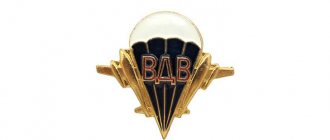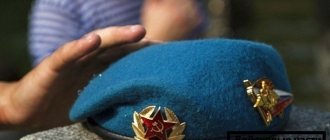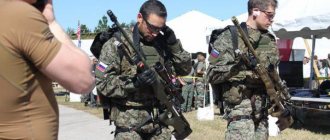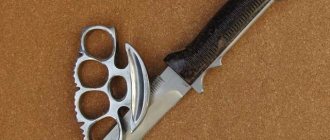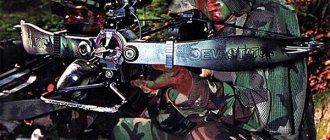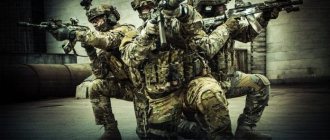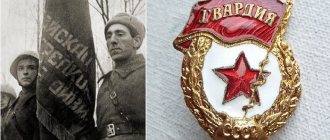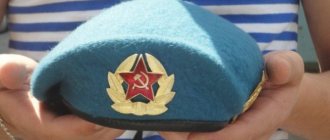We beat back step by step at home
The reverse side should be processed, not the front side.
Method 1
The most complex and expensive method. However, if performed correctly and strictly following all the instructions, the result will be a headdress that is ideal in shape and angle.
For the event you will need:
Algorithm of actions:
- tear off the lining of the beret (in some cases you can skip this step) and place the headdress in hot water for 2 minutes;
- take it out, drive off the excess water with your hands ( drive it off, without twisting or squeezing
); - after the water stops dripping, insert the cockade ( for correct placement, follow the liner inside the beret
); - put on the head, tie;
- smooth out the headdress, give it the correct shape;
- cover the beret with shaving foam without removing it from the head;
- wait a few minutes, wet your hands and start rubbing in the foam;
- give final shape;
- leave alone for 1.5 hours (no need to remove);
- after this time, remove the headdress, clean from pellets and residual traces of foam ( small signs of wear - pellets - are removed using a razor drawn along the pile
); - fill the inside with a large amount of varnish (you should not spare the product, as it will give the headdress the necessary hardness);
- cut a small rectangle out of the card, then make 2 holes in the piece for the “antennae” of the cockade, insert the cockade and tighten the “antennae” to your taste.
- smooth the left side of the beret back (while bringing your hand straight to the back of your head);
- smooth the crown to the right;
- We create a half-disc at the right ear.
Method 2
The method is suitable for military and civilians who want to flatten one side of their headgear (bevel it to one side). To do this, you literally have to break off the edge. You will need a hammer and a hard surface strong enough to withstand repeated direct hits from the tool (a barracks stool, for example).
Step-by-step instruction:
The blows should be light, but accurate. If you don’t have the skills to handle the tool or are afraid of ruining the item, use a steel spoon
. However, the process of involving her will take longer.
Method 3
A method that is relevant for the teardrop beret. Take a hat, wet it with water and quickly shake it off (no need to get too wet). Next, put the product on yourself and give it the shape prescribed in the charter. Do this until it is completely dry ( do not forget to smooth and adjust the beret from time to time, otherwise it will not dry correctly
).
- Women's berets 2020
When the beret becomes dry, press down the edge with pliers. If the tool is handled correctly, the part will become as sharp as required.
If the idea of wearing a wet headgear is not pleasant in itself or there are reasons to refrain from such a step, and you have a mannequin or at least a ball at hand, the circumference of which coincides with the circumference of your head, then put a beret on them. However, you need to be prepared for a not entirely correct fit - nevertheless, these objects do not correspond to the curves and structural features of your particular head.
Method 4
Soak the headdress in hot water, remove the bulk of the water with your hand, put the product on, and then give the edge a sharp shape using your fingers (punch the edge), paper clips or clothespins.
Method 6
Wash and iron through gauze (double). Before ironing, place a rolled up wet towel inside the headdress (helps create a shape). Then beat off the edges with a hammer.
Method 7
Soak for a couple of minutes in warm water. Take it out and stuff it tightly with newspapers. Ensure that the form adopted corresponds to that required by the charter. Smooth out the folds, and “bevel” the desired side and secure with clothespins. Leave until completely dry ( the item should be kept away from operating heating devices and direct sunlight
).
Method 8
- Mix 180 g of water (cold) with 100 g of starch. Mix thoroughly. Add the resulting mixture to 900 g of heated water.
- Dip the beret and give it the desired look after pulling it out. Once you achieve your goal, put it on the ball or dummy. Let dry.
Mess? Come on! Typical army show off
If you look at the armies of different countries, you can identify several characteristic features in wearing berets.
Firstly, the armed forces of any state have their own combined arms headdress. It could be a cap, a cap, a Panama hat, or a beret in a neutral color: olive, green or black. Camouflage berets, no matter how strange it may sound, did not take root among the troops as ceremonial berets. With rare exceptions (for example, the Kfir brigade, consisting of Druze nomads in Israel).
(Photo: Israel Defense Forces)
In 1951, American Marines went through several dozen color options for the beret.
As a result, they all spat and rejected them with the wording “our guys won’t wear girls’ hats.” And they adopted the famous eight-piece cap.
A helmet is more often used as field headgear - it still protects more reliably from bullets. Although there have been examples in history of the use of berets. For example, Portuguese, Brazilians, Filipinos or South Africans.
One more feature. Historically, the three beret colors are always busy. Black - tankers, dark burgundy - paratroopers (for this they received the nickname "cherries"), dark green (dark green, or commando green) - commando units. But if the identity of the first two colors is in most cases unshakable, then the last color is not very “lucky”. Shades of green are used by everyone who is not too lazy. Which causes a logical confusion between special forces and all light infantry, reconnaissance and even air defense units.
The position of the beret on the head, its size, the location of the unit’s insignia, etc. is a feature of each branch of the military. For example, British commandos wear a green beret. It is folded over the right ear, the position of the cockade is above the left eye, the edge of the headdress is two fingers above the eyebrow. And in the American army it is customary for the cockade with the backing to stand vertically. That’s why you can often see that the sign is located almost parallel to the soldier’s forehead.
Takes 1st US Security Forces Support Brigade
In the Israeli army, it is generally customary to shave the beret after completing the KMB (young soldier course). But Israel is a separate issue. There is a constant rivalry between the three infantry brigades - Golani (brown beret), Givati (purple), Nahal (lime) - and the paratroopers (traditional maroon) as to who fights better.
And since they are all cool, what remains is the honor of the uniform and showing off with wearing berets and insignia.
In addition to infantry brigades and paratroopers, there are also tankers, reconnaissance officers, pilots... And each unit has its own beret. And your own rules for wearing it with the rest of the uniform. In general, without prior preparation, trying to understand the “color differentiation” of parts of the Israeli army is not an easy task (although some researchers argue that there are even more colors in the British army, but “that’s how it happened historically”).
If there are not enough beret colors, the cockades and the backing for the hats will differ. Thus, the color of the attire itself indicates that the military man belongs to a certain branch of the military. Cockade - general or subunit. And the background is the relation to the “department”: transport, logistics, supplies, etc. For example, because of the pink background of the administration department in the Dutch army, its employees are not called anything other than the “pink mafia”.
American Army Elite
The most famous Green Berets are the special forces of the United States Army.
Special Forces troops are actively used abroad in eight designated areas. The main goals and objectives that are set for the fighters of these units are as follows:
- strategic intelligence;
- organization and management of partisan actions;
- real raid operations in military conditions;
- assistance to foreign states in ensuring security within them.
One of the main characteristics of each Green Beret Special Forces group is its distinct regional focus. Let's list the most important of them:
- The Asia-Pacific region is assigned to the first group.
- Africa (excluding Kenya, Egypt, Somalia, Sudan and Ethiopia) is covered by the third group.
- The Near and Middle East is the focus of the fifth group; this part of the troops also includes African countries not covered by the third group, namely: Kenya, Egypt, Somalia, Sudan and Ethiopia.
- Central and South America is the area of activity of the seventh group.
- The European zone is assigned to the tenth group.
It is very interesting that the so-called depth of the tasks of any of the groups is actually not limited (with the exception of some special moments) and is almost completely determined by the orders of the command levels to which this or that group is directly subordinate and in whose interests it is used. Another factor in determining the depth of tasks is purely technical: the capabilities of transport and communications.
Style rules: how to wear a beret?
The total number of each special forces group is approximately 1,400 fighters. As a rule, up to fifty-four operational detachments of twelve people each can be allocated from a unit.
What does the special forces take?
At the end of the 20th century, berets became an integral part of the everyday and ceremonial uniforms of the armies of many countries. Almost every defense-capable state has elite special units that have their own unique headdress:
- The mountain infantry detachments of the French armed forces, the Alpine Chasseurs, wear a dark blue beret of sufficiently large diameter.
- The elite Foreign Legion is characterized by headdresses of a light green hue.
- French naval special forces are distinguished by wearing a green beret.
- German airborne troops and reconnaissance units wear maroon berets, but with different emblems on it.
- The Royal Netherlands Marines are distinguished by wearing dark blue elements of their uniform, while paratroopers wear burgundy headdresses.
- The British SAS special forces have been wearing beige caps since the mid-forties of the last century, and the Marine Corps have been wearing green caps.
- US Rangers are recognizable by the same color as the British Special Forces - beige.
- US Special Forces have worn green berets since 1961, which is how they got their nickname.
You may notice that most NATO member countries have identical color schemes for their hats. As for the shape, all armies have it round, and differ only in size.
Types of berets
Berets are worn by many of the world's armed forces. Our army is no exception. Who can you see this headdress on?
- Speckled. The maroon beret is a form of encouragement for special forces and internal troops of the Ministry of Internal Affairs. To get it, you must prove that a person has all the qualities inherent in a professional. It is presented as a reward for courage. A maroon beret is issued after a series of tests. First, a preliminary stage is carried out, then the main tests, which include a march of at least 10 km, and performing acrobatic exercises, and hand-to-hand combat, etc.
- Blue. The blue beret is used by many branches of the military. In Russia, the blue beret is worn by airborne troops (VDV). At first it was crimson, like other airborne soldiers, but in 1968 the color was changed to blue. That's how he remains to this day.
- Green. Border troops, FSSP special forces, reconnaissance units of various branches of the military.
- Black. The black beret is the symbol of the Marine Corps. This is a compact headgear that does not interfere while moving. It's easy to put headphones on it and hide it in your pocket. The Marine Corps is an elite branch of the military, so wearing a black beret is also an honor.
There is a suture headgear and a seamless one, which is also called a droplet.
“The hardest thing is the fight. You saw how they beat me there.”
Candidates enter the ring in twos or threes - at the beginning, two fight with each other, the third fights with the instructor. Every 2-4 minutes they change with each other, for a while an instructor comes out to each fighter - fresh and full of strength. The task of winning is not worth it, and it is almost impossible (especially if the instructor is suddenly defeated, he himself will be deprived of his beret, but this happens extremely rarely). The task is to hold out until the end, not to get knocked out and not give up.
This is almost impossible - already in the first minutes of the battle, the candidates, who have already undergone many grueling tests, run out of strength. Your own body becomes your biggest rival.
Those who do not fight intensely enough receive warnings. One of the candidates gets his face bloodied, but that in itself doesn’t mean anything. However, he soon “floated” - he stopped actively beating. The referee (who looks very similar to the instructor from the movie “Starship Troopers”) makes comments to this candidate and at some point even tried to remove him from the tests. “I can fight, I can,” the fighter objects and returns to the fight. Later, he is still removed - literally in the last minutes, along with another fighter. They are led to the doctors with broken faces.
1/12
How to properly return a military beret
- Maxim Platonov
- Maxim Platonov
- Maxim Platonov
- Maxim Platonov
- Maxim Platonov
- Maxim Platonov
- Maxim Platonov
- Maxim Platonov
- Maxim Platonov
- Maxim Platonov
- Maxim Platonov
- Maxim Platonov
The instructor who fought with him comes out to the fighter remaining in the ring and is asked the question: “Is the candidate worthy?” He answers, “Worthy,” to general applause.
The second three fighters are of greatest interest - it was there that Colonel Sergei Khairutdinov entered the ring. He is immediately pitted against the instructor - Khairutdinov starts the fight quite cheerfully, although he then goes into full defense. “Comrade Colonel, hands up,” you can hear from behind. When he manages to land a particularly well-aimed blow on the instructor, the audience applauds.
Khairutdinov manages to survive - literally on the brink. After the fight, he even finds the strength to answer a couple of questions from reporters. “The most difficult stage? The battle. You saw how they beat me,” he says.
In total, seven special forces soldiers received the coveted beret - two from the Kazan special forces detachment, two from the Ufa and three from the Sarov brigade. The berets were presented to them in a solemn ceremony outside the training ground - at the base of the Kazan special forces detachment "Bars".
1/60
- Maxim Platonov
- Maxim Platonov
- Maxim Platonov
- Maxim Platonov
- Maxim Platonov
- Maxim Platonov
- Maxim Platonov
- Maxim Platonov
- Maxim Platonov
- Maxim Platonov
- Maxim Platonov
- Maxim Platonov
- Maxim Platonov
- Maxim Platonov
- Maxim Platonov
- Maxim Platonov
- Maxim Platonov
- Maxim Platonov
- Maxim Platonov
- Maxim Platonov
- Maxim Platonov
- Maxim Platonov
- Maxim Platonov
- Maxim Platonov
- Maxim Platonov
- Maxim Platonov
- Maxim Platonov
- Maxim Platonov
- Maxim Platonov
- Maxim Platonov
- Maxim Platonov
- Maxim Platonov
- Maxim Platonov
- Maxim Platonov
- Maxim Platonov
- Maxim Platonov
- Maxim Platonov
- Maxim Platonov
- Maxim Platonov
- Maxim Platonov
- Maxim Platonov
- Maxim Platonov
- Maxim Platonov
- Maxim Platonov
- Maxim Platonov
- Maxim Platonov
- Maxim Platonov
- Maxim Platonov
- Maxim Platonov
- Maxim Platonov
- Maxim Platonov
- Maxim Platonov
- Maxim Platonov
- Maxim Platonov
- Maxim Platonov
- Maxim Platonov
- Maxim Platonov
- Maxim Platonov
- Maxim Platonov
- Maxim Platonov
Alexander Artemyev, photo by Maxim Platonov, video by Kamil Ismailov
Society Tatarstan
What is the purpose of the tests for passing the maroon beret?
The main goal of qualification tests is considered to be the selection of the most trained military personnel who have enhanced individual physical and fire skills. Such fighters will be treated in a special way in the future, because they will be very valuable specialists who will have to deal with real, especially dangerous criminals.
A forced march includes running through the mountains, crossing swampy areas and bodies of water, carrying comrades, crawling on bellies, and others. Following the forced march, the warriors go through a fire-assault obstacle course. After passing it, a single shot is fired upward with a personal weapon to check the condition of the weapon. In case of a misfire, participants will be disqualified.
Next, fire training is carried out, despite the strong fatigue of the fighters, which significantly affects the accuracy and accuracy of fire. After the shooting range, the military begins the assault on the “five-story building.” Using special equipment, they descend from the roof and open fire on targets. At the same time, it is prohibited to hit targets simulating hostages. Upon landing, the fighters must have time to use the radio station to report the end of the assault operations.
How to pass a maroon beret in Russia
The change for the maroon beret usually starts at 6 am. The equipment of each candidate is the same: uniform for the season, body armor (at least 10 kg), helmet, gas mask, machine gun. During the surrender, the loss of any element of equipment is not allowed. Each person also receives one blank cartridge.
All tests take place on one day, one after another:
- 10 km forced march;
- passing the fire-assault line;
- assault on a high-rise building;
- performing special shooting exercises;
- acrobatics;
- display of hand-to-hand combat complexes (3 without weapons and 1 with weapons);
- hand-to-hand combat.
Forced march
At the appointed time, all candidates line up on the parade ground, and the senior commander gives the order for the march. Immediately after the start, a very high pace is set in order to remove as many participants as possible. It lasts for 2-2.5 km. After this, candidates enter a smoke-filled area and use gas masks, in which they continue the test for some time.
Wearing a gas mask during an exam
In addition, various commands are given during the march:
- being ambushed;
- overcoming water obstacles, rubble, natural obstacles, etc.;
- enemy air attack;
- evacuation of the wounded;
- push-ups and bringing your legs to your chest.
After 2 hours, the forced march ends and the passage of a special obstacle course begins.
Overcoming the obstacle course
Instructors are not allowed to help and anyone who is more than 50 m behind the main group is disqualified from the test.
Passing an individual WBS element
During the passage of checkpoints, smoke bombs, simulated explosion packages, and shelling with blank cartridges are widely used. Here, candidates act as part of fighting trios, and the failure of one can lead to the removal of the entire group
Therefore, special attention is paid to coherence and mutual assistance.
After passing stage 2, the functionality of the weapon is checked. If the machine gun does not fire, the participant is removed from the distance.
Checking the state of the machine gun after completing the forced march
Assault on a high-rise building
The assault on a high-rise building involves fulfilling the standard “Descent from a high-rise building by assault.” In 30 seconds you need to go down the rope from the 5th floor. On the 4th floor you need to hit the target with a machine gun, and on the 3rd floor you need to throw a grenade. Any errors or exceeding time limits will result in withdrawal.
Shooting exercises
According to Order of the Ministry of Internal Affairs of the Russian Federation No. 632 “On the procedure for passing qualification tests for the right to wear a maroon beret,” the level of fire training is checked by performing a special exercise.
2 targets with 4 kill zones are located at a distance of 20 meters. In 20 seconds, you need to hit each of them one by one, firing 20 shots. The exercise is considered completed if zone “A” is hit 19 times, and zone “B” 1 time. Entering zone “D” results in the participant being removed.
Target used in the exam
Acrobatics
The following is a test of acrobatic techniques:
- kip rise;
- kick followed by somersault;
- front flip.
Having completed all these exercises in a row, they move on to demonstrating special sets of hand-to-hand combat techniques (katas).
Hand to hand combat
The final test is training matches lasting 12 minutes.
Fragment of the battle at the qualification tests
Fights are fought between candidates and in case of passivity, the pairs are “broken up” by instructors. Most often, it turns out that during the entire period each candidate will fight with the instructor at least once.
Fight with the instructor during the submission
Only after passing all the tests does a serviceman receive the right to wear a maroon beret, which is recorded in the military ID and personal file. In addition, a numbered certificate of passing the exam is issued. The presentation takes place at a ceremonial formation the next day.
Ceremony for presenting the maroon beret
The serviceman breaks ranks, takes the beret, kneels, kisses him, dresses him and says “I serve the Russian Federation and special forces!”
Takes in law enforcement agencies, youth military-patriotic organizations of the USSR and Russia[2]
- — Airborne Forces of the USSR/Russian Federation. Special forces of the GRU General Staff of the Armed Forces of the USSR/Russian Federation (must be worn with a vest with sky-blue stripes). For the GRU special forces, due to the increased secrecy of the units, it is allowed to wear uniforms and headdresses of all types and branches of the Russian Armed Forces.
- Blue Beret - Russian Air Force, currently VKS.
- The cornflower beret is a special forces unit of the FSB of Russia, special forces of the FSO of Russia.
- Black beret - Special Forces of the USSR/Russian Federation Navy (must be worn with a dark blue striped vest). Combat units of the coastal forces of the Navy, tank troops. Also the OMON of the Ministry of Internal Affairs of Russia, currently the Russian Guard.
- The dark blue beret is the SOBR of the Ministry of Internal Affairs of Russia, currently the Russian Guard.
- The gray beret is currently a member of the Russian Guard (previously part of the USSR Ministry of Internal Affairs/Russian Ministry of Internal Affairs).
- Green beret (light) - Border troops of the FSB of Russia (must be worn with a vest with light green stripes).
- The Green Beret is the special forces of the FSSP of Russia.
- Green beret (dark) - used in various types of Russian troops, including units () of the internal troops of the Ministry of Internal Affairs of Russia (now the Russian Guard), intelligence of the Russian Guard.
- Olive beret (light) - until 2016 - Internal Troops of the Ministry of Internal Affairs of Russia, special forces of the 12th Main Directorate of the Ministry of Defense of Russia; after 2016 - military personnel of the Russian Guard.
- Olive beret (dark) - since 2006 it has been used in military ground anti-terrorist units. Officially used in the 29th, 34th, 38th and other military special anti-terror units of the railway troops, formerly part of the Federal Service of Railway Troops, special anti-terror units of motorized rifle troops, special anti-terror units of signal troops, etc.
- Orange beret - Russian Ministry of Emergency Situations.
- The maroon beret is the Special Forces of the USSR Ministry of Internal Affairs/Special Forces of the Russian Ministry of Internal Affairs, now the special forces of the Russian Guard. Also in the special forces of the Federal Penitentiary Service of Russia. The right to wear a maroon beret is given only after passing strict qualification tests or in the form of an award for special merits. The maroon beret is de facto the highest form of encouragement for military personnel of the USSR/Russian Internal Troops, the Federal Penitentiary Service of Russia and the Russian National Guard. Recommended to be worn with a speckled striped vest. De jure it is a standard form of dress. Like all hats of this type, the maroon beret, according to regulatory documents, is worn tilted to the right side. However, soldiers who have passed official tests for the right to wear a maroon beret often wear a maroon beret tilted to the left side in order to distinguish themselves from military personnel who wear a beret in their uniform. This practice is used by military personnel of many units, in which military uniforms include wearing a headdress in the form of a beret.
- Red beret (dark) - military police, formerly military commandant's office.
- Red beret - Young Army of Russia.
- - Airborne Forces (Air Force special forces) in 1967-68. — abolished, replaced by a blue beret.
- Camouflage beret in birch color - border troops of the KGB of the USSR until 1990.
- The camouflage beret in “number” colors has been a combined arms beret since 2014 for the Ground Forces and other branches of the Russian Federation that do not have their own insignia/type of beret that would indicate membership in a specific branch of the military. Since 2014, in all military units that do not belong to special structures of the Russian Federation, the wearing of caps and caps is gradually being replaced by the wearing of camouflage-colored berets. Not provided for the parade. Previously, a similar beret (beret in “flora” colors) was used in the engineering troops and military institutes of the engineering troops.
Selection of candidates
Everyone is well aware of the army song “Mercenary”, in which there is only one explanation for the trials that befell the soldiers: “After all, you are a mercenary in a green beret.” How to become a soldier in the United States Army? What standards are needed to qualify for the Green Beret? Or maybe green berets should also sing songs?
First of all, we will outline the characteristics and advantages that a candidate for the Special Forces must have (all of them are necessarily reflected in the personal file of a potential warrior).
- Good education and extensive knowledge in the fields of physics, history, foreign languages, political science, geometry, economics and even agriculture.
- Excellent physical shape and easy tolerance of serious physical activity.
- Sufficiently developed willpower.
- The ability to self-control and responsible attitude towards service.
- Tolerant attitude towards different cultures, nationalities and religions.
- Strong character and resilience.
- Judgment and self-control.
- Determination.
- Communication skills.
Moreover, it is not enough to demonstrate all these qualities periodically. They need to be on display every day and everywhere as the actual and real essence of the Green Beret candidate.
Do you think this long list of your characteristics will be enough? Of course not. Just imagine, they are not even enough for you to become a candidate for a qualification course. First you need to step over a few more steps.
Which troops does this ammunition belong to?
only Marines wear a uniform beret
Who has the right to wear such a headdress?
Such powers are vested not only in conscripts and professional military personnel, but also in reserve, retired or retired citizens. You can lose such a right by committing illegal actions that discredit military honor. This procedure is not carried out automatically or by just anyone.
The decision can be made by the commanders of the troops (district, group of forces, fleet, front), the commander-in-chief of all the country's troops, the minister of defense and his deputy.
It cannot be avoided by people who wear the insignia of foreign troops as a joke or for any other disrespectful reason.
The punishment depends on who exactly committed the act. If you are an ordinary person, then he will have to pay a fine (1-1.5 rubles), and also hand over all his uniform items. If necessary, a search and confiscation may be assigned and carried out. A detective or other specialist of a similar profile who puts on a black beret while performing an official task will be forced to pay 1.5-2 thousand rubles. Law enforcement agencies will confiscate the items.
After what exams can I wear it?
You must prove your right to wear it by passing an examination test (consists of several stages). It is carried out at the training ground at a specially designated time, the day is appointed by the commanders. Only fighters who have demonstrated certain physical, psycho-emotional and mental abilities at the preparatory stage are allowed to submit.
Test progress:
- forced march;
- passing an obstacle course;
- performing sets of exercises;
- passing shooting standards;
- hand-to-hand combat.
Simple names hide complex due diligence. At the forced march stage, the fighter has to overcome water obstacles, prove himself in terrain orientation, and perform additional tasks (supporting and carrying a comrade, performing various types of introductory exercises). At the same time, the military man is dressed in full uniform, with a backpack over his shoulders. In general, the ammunition weighs about the same as the belly of a pregnant woman in her last month (therefore, these loads are often compared).
When crossing an obstacle course, pressure is placed on the fighter. Organizers influence his senses. The desired effect is achieved by simulating and creating the noise of a real battle, as well as the use of smoke, conventional and gas bombs.
By the time he passed the shooting standards, the person was already pretty exhausted. If there are serious diseases of the heart and nervous system, your hands will tremble and you will not be able to pass the stage. Therefore, a black beret, among other things, is also a distinctive sign of excellent health.
The final test includes 3 sparring sessions. The opponents change after each one. Duration of 1 battle: 2 minutes.
The surviving fighters are solemnly awarded a beret. Usually it is awarded to a person with an impeccable reputation who has achieved high achievements in the military field.
What other details complement the uniform with a black beret in Russia?
To begin with, it is worth clarifying 2 fundamental points:
- You cannot wear civilian clothes and a military uniform at the same time (only one);
- You cannot mix the details of different troops.
Violation of any of these rules entails the imposition of administrative penalties, and also often becomes the cause of conflicts.
The beret itself is worn with a crease on the right side. There is a distinctive sign - a cockade and a band.
A little history
The red beret was first worn by troops in the 80s
At that time, the Olympics were to be held in the USSR and, accordingly, such an event required serious preparation and special precautions. Therefore, shortly before the sporting event, a special company was created
It was from this that the world-famous Vityaz detachment emerged.
The red beret was necessary for the military to distinguish itself from other troops. The color scheme was not chosen by chance - it was a symbol of the country.
The first batch of berets was produced in the amount of fifty pieces. Due to a shortage of dyes, the headdress turned half green and half red. Until 1985, the beret was worn only in parades. For some time, all troops had this symbol. However, later they earned the red beret by passing certain tests. Until the 90s, examinations for the right to wear this headdress were carried out secretly, but after the adoption of the regulation of May 31, 1993 by General Kulikov, everything became part of the law. The document described what qualification tests the military must pass in order to receive the same
Marine Corps in the Soviet Union
Marines appeared in Tsarist Russia. The first mention of this type of troops can be found in the chronicles of naval battles of the army of Peter I. Then Russian sailors boarded Swedish ships in the Battle of Gangut on November 27, 1705. Later, the “sea soldiers” of Admiral Ushakov distinguished themselves by taking an impregnable French fortress on a Greek island Corfu at the end of the 18th century.
In 1905, after the end of the Russo-Japanese War, specialized units were formed on the basis of the Russian fleet, which continued the development of the Marine Corps. Ten years later, the combat formations were renamed marine infantry divisions, which proved themselves in 1918, when the Civil War began. Later, new formations of special troops appeared in the Red Army. In 1920, the Marine infantry division, which took part in the battles in the Donbass, underwent its first baptism of fire.
In 1939, the military command of the USSR decided to create the first brigade of Soviet marines. “Black Death,” that’s how the Nazis dubbed the Soviet soldiers. Black pea coats, peakless caps, incredible courage and contempt for death - all this terrified the enemy in the battles for Odessa and Tallinn. The German invaders fled from the “black pea coats” in the battles for Stalingrad. Black became a household name for soldiers of the USSR Marine Corps.
After the Great Patriotic War, the number of Marines was reduced to a minimum. The country's military leadership was able to understand their mistake only in September 1950, when a detachment of US Navy SEALs occupied the city of Seoul in two weeks, completely changing the balance of power in the Korean War.
Then the Soviet generals remembered the “black pea coats.” In 1960, also black, but with berets, they were revived in the form of the 336th separate marine regiment in Baltiysk.
Demonstration performance by military personnel of the 336th Marine Brigade
Briefly about the main thing
The beret itself is nothing special.
He takes and takes. Simple, effective, known since ancient times. At first, they were worn by students, artists and other “educated people” in the Middle Ages. But on the battlefield, berets made their debut in the 16th and 17th centuries as the national headdress of the Scots during the next showdown with the British for independence.
This part of the uniform began to be used as a distinctive sign of the unit in the 1880s, with the advent of the French Alpine riflemen. But tanks brought berets popularity.
With the appearance of these fire-breathing monsters on the stage of the Great War, their crews had to get used to completely new sensations: cramped conditions, heat and constant danger. And there are just a huge number of metal parts around. No, no, and you’ll hit your head on something. So when British tank crews trained with Alpine riflemen in 1918, they borrowed their fine headgear from the French.
French Alpine shooters
True, in 1923, before presenting them for approval to King George V, the shape of the berets was nevertheless changed to one more familiar to the British and closer to the Scottish ones.
The history of the formation of “green” US special forces
The command was officially established in the fall of 1990, namely on November 27. According to Pentagon leaders, the Green Berets are the pride of the US Army. This is the most well-trained contingent with a high level of training. Quite expectedly, the Special Forces are recognized as the elite of the American army.
The beginning of this type of troops was laid in the middle of the eighteenth century, during the Anglo-French wars. They were established as a reward for the capture of French territories on the continent of North America. These units were first named after their starting commander, Robert Rogers, who had the rank of major. Accordingly, the Green Berets were previously widely known as the renowned Rangers. From English, ranger is translated as a saboteur-reconnaissance officer of the corresponding group. Rogers taught his troops that they must “move fast and be devastating.” Further, in the next period, in fact, the birth and then the final formation of Special Forces troops in the United States took place.
The White House, in a special memorandum, proposed its interpretation of the concept of “Green Beret.” From the point of view of the American government, it is a symbol of direct superiority, a sign of demonstrated courage, and a special symbol of direct participation in the struggle for freedom.
How to care
The black beret is a special headdress, so the owner simply does not have the right to be negligent about its appearance. In order for the beret to sit beautifully and stately, it must be beaten off. There are several methods, from a simple “we wet, iron, steam and beat the edge with a hammer” to a real ceremony, after which the honorary headdress will look and fit perfectly on the fighter.
Considering the price at which the treasured accessory was obtained, any soldier treats the beating process responsibly. The approximate order of how to repel the Marine Corps beret looks like this:
- First you need to carefully tear apart the lining;
- place the beret in hot water, wait 2-3 minutes, then squeeze;
- insert the cockade and put it on your head;
- in front of the mirror you need to give the beret the desired shape, pressing firmly in the necessary places;
- the fixation process is carried out by applying and rubbing shaving foam tightly into the fabric, this is done directly on the head;
- when the beret begins to dry, you can put it aside for final drying - it will not lose its shape;
- In order for the beret to be smooth, you need to “shave” it with a machine, thereby removing the pellets.
Find out: What ranks are accepted in the Russian army, what shoulder straps correspond to them
At the end of the procedure, the inside must be treated with hairspray, preferably in large quantities. Thus, the beret will not be able to lose its shape, and will become a real decoration on the head of a courageous and strong fighter.
To summarize, the following points can be highlighted:
- black berets in the Russian army are assigned to special forces of marines and riot police;
- Only fighters who have proven their worth by passing a special test have the right to wear a beret;
- There are no age restrictions for passing the test, it all depends on the physical and psychological preparation of the fighter; you can get a beret even if you are a forty-year-old veteran, setting a real example of courage to young special forces.
Author's rating
Author of the article
Vitaly Ryabov
I have conscription service behind me, and then contract service. Now retired.
Articles written
241
